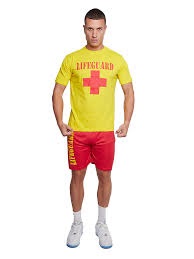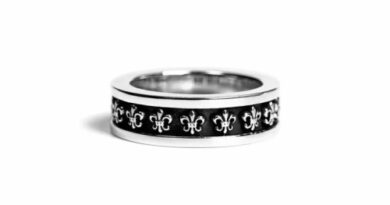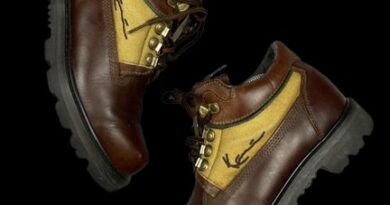Life Guard Outfit A Guide For Style, Safety, And Performance
Life guards outfit are the guardians of pools, beaches, and aquatic facilities, ensuring the safety of swimmers while representing professionalism and vigilance. The right lifeguard outfit plays a significant role in both appearance and functionality. This guide delves into the essential components of a lifeguard outfit, key features to look for, and tips to enhance both safety and style.
1. Essential Elements of a Lifeguard Outfit
A complete lifeguard outfit includes swimwear, cover-ups, and accessories designed to meet the demands of the role.
a. Swimwear
Swimwear is the foundation of a lifeguard’s uniform, providing flexibility, durability, and visibility.
- One-Piece Swimsuits (for women): Offer full coverage and secure fit, often in bright red or yellow with “LIFEGUARD” printed across the chest.
- Two-Piece Swimsuits: Include sporty designs with supportive tops and secure bottoms, suitable for movement-intensive duties.
- Board Shorts (for men and women): Designed with quick-drying fabrics, these shorts provide extra coverage and comfort over swimsuits.
- Trunks (for men): Red or bright-colored swim trunks with a secure drawstring waistband are standard for male lifeguards.
b. Shirts and Cover-Ups
Many lifeguards wear t-shirts, tank tops, or rash guards for additional sun protection and to enhance visibility.
- Bright Colors: Red, yellow, or neon colors with white lettering ensure high visibility.
- Sun Protection Fabrics: UV-resistant materials provide added protection during long hours in the sun.
c. Hats and Sunglasses
Sun protection is crucial for lifeguards who spend hours outdoors.
- Wide-Brimmed Hats or Visors: Shield the face and neck from harmful UV rays.
- Polarized Sunglasses: Reduce glare from the water’s surface, enhancing visibility and reducing eye strain.
d. Footwear
While lifeguards often go barefoot for water rescues, footwear is necessary for walking on hot surfaces or rocky beaches.
- Flip-flops or Sandals: Lightweight options with non-slip soles.
- Water Shoes: Provide extra grip and protection.
e. Whistle and Lanyard
A whistle is a vital tool for attracting attention and issuing warnings.
- Pea-Less Whistles: Perform well even when wet.
- Breakaway Lanyards: Ensure safety by preventing choking hazards.
2. Key Features to Look for in Lifeguard Apparel
Choosing the right lifeguard outfit requires attention to comfort, durability, and visibility.
a. Comfort and Fit
- Stretchable Fabrics: Allow ease of movement.
- Secure Fastenings: Prevent wardrobe malfunctions during rescues.
- Adjustable Straps: For a personalized fit.
b. Durability
- Chlorine-Resistant Materials: Prolong the lifespan of swimwear used in pools.
- Fade-Resistant Colors: Maintain visibility even after prolonged sun exposure.
c. High Visibility
- Bright Colors with Contrasting Logos: Red or yellow with large, white “LIFEGUARD” lettering.
d. Sun Protection
- UV-Resistant Fabrics: Protect skin from harmful rays.
- Long-Sleeve Options: Provide extra coverage.
3. Accessories to Enhance Safety and Style
Lifeguards rely on a variety of accessories to stay prepared and comfortable.
a. Rescue Tubes and Buoys
Brightly colored rescue equipment is essential for aiding swimmers in distress.
b. First Aid Kits
Portable kits allow quick response to minor injuries.
c. Hydration Gear
Water bottles with built-in filters or cooling sleeves are vital for staying hydrated.
4. Personalizing Your Lifeguard Outfit
Adding a personal touch to your outfit can enhance your confidence and enjoyment on the job.
a. Custom Logos
Some lifeguards choose uniforms with custom logos or team names.
b. Color Accents
Bright visors, sandals, or sunglasses can reflect personal style while remaining functional.
c. Stylish Sunglasses
Choose designs that combine performance and flair, such as mirrored or oversized frames.
5. Lifeguard Safety Tips
A well-equipped lifeguard is always prepared for emergencies. Here are a few additional safety tips:
a. Apply Sunblock
Choose broad-spectrum sunscreen with an SPF of 30 or higher, and reapply every two hours.
b. Stay Hydrated
Keep water or electrolyte drinks on hand to prevent dehydration.
c. Be Aware of Surroundings
Maintain vigilance to respond quickly to potential dangers.
Conclusion
A life guard outfit is more than just a uniform—it’s a crucial combination of apparel and accessories designed for safety, performance, and professionalism. By selecting high-quality, comfortable, and durable pieces, lifeguards can ensure they are prepared for the demands of their role while projecting confidence and authority. Whether you are a professional lifeguard or preparing for certification, investing in the right outfit makes a significant difference in performance and comfort.




